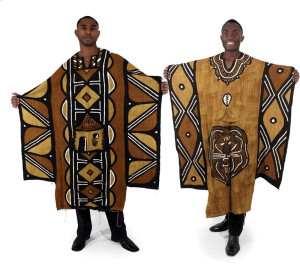
This Black History Month, you or others you know may be celebrating by wearing traditional African garments to church or other events. Wearing African clothing is a wonderful way for many to celebrate their culture and their heritage and to commemorate the beauty of the motherland.
Wearing African clothing means so much more to many people than simply being a fashion statement. Tailors don't make clothes simply for appearance sake; each symbol, color, and even the shape of the clothing can have a very specific purpose or meaning. African clothing can be a symbol of status, creativity and allegiance to tribal roots.
Let's take a look... Kente Cloth
Kente Cloth Skirt Sets Kente cloth is the quintessential African look. It is a vibrant fabric, woven into long 3- to 4-inch-wide panels. Several panels can be sewn together to make clothing for both men and women. The patterns created by the brightly colored threads often represent common motifs, religious beliefs, and political commentary. The colors are of particular significance as they interpret the meaning of the pattern, with red symbolizing death, green meaning fertility, white expressing purity and blue signifying love.
Mudcloth or Bògòlanfini

Mudcloth Grand Bubu
Originating from Mali's Bamana culture, Mudcloth is an ancient art form that involves weaving cloth and dyeing it with fermented mud. In traditional Malian culture, bògòlanfini is worn by hunters, serving as camouflage, as ritual protection and as a badge of status. Women are wrapped in bògòlanfini after their initiation into adulthood and immediately after childbirth, as the cloth is believed to have the power to absorb the dangerous forces released under such circumstances. Bògòlanfini patterns are rich in cultural significance, referring to historical events (such as a famous battle between a Malian warrior and the French), crocodiles (significant in Bambara mythology) or other objects, mythological concepts or proverbs. Since about 1980, Bògòlanfini has become a symbol of Malian cultural identity.
The Importance of Color
George Fabric Kaftan
The following is a list of some of the main colors found in African clothing followed by their meaning to the African people. There can be variations in the meanings depending on the people group you are studying; however, in general these are the most common meanings behind commonly used colors in Africa. Gold: Gold is an extremely popular color. It represents wealth and fertility. Red: Red represents tension in the spiritual or political world and is viewed as the color of blood. Blue: Blue represents love and peace, it symbolizes the sky, and is a harmonious color. Green: Green represents prosperity and life and is also a medicinal color. White: Spirituality and purity The Africans took the meanings and spirituality of the colors in their cloth very seriously. As you can see, choosing an African garment to wear can mean a lot more than choosing a style that flatters you. You can truly experience Africa by choosing a color or fabric that has a significant meaning to you or to the culture. Would you like to see a huge selection of African garments and styles at affordable prices? Just check out the links below!
Click here to find out HOW TO START YOUR OWN BUSINESS selling African products!
 USD
USD  GBP
GBP  CAD
CAD  AUD
AUD 